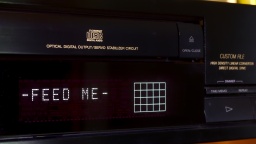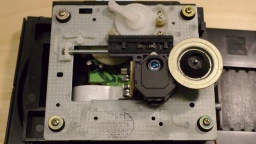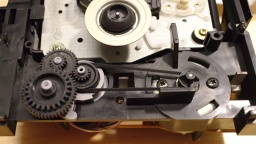Let's do a hardware related project for a change. A few days ago, I found my good old CD player from the time when I was in my early twenties. It's a CDP-991. Sony has produced them around 1991.
I still remember when I was in a HiFi store and gave the CDP-991 a try. I brought my "horror CD" with me. It had a few deep scratches from a careless handling of mine. My old CD player at home could play track 1 with a lot of skipping, and capitulated on the next tracks. I wondered how the CDP-991 would play it. Maybe it would play track 1 with almost no skips, and even a bit of the next tracks? I was flabbergasted when the player was totally unimpressed of the scratches, and just flawlessly played all the tracks. I bought the CDP-991 on the spot. 😁
It was the component of my HiFi equipment that I was most proud of. And even many years later - in the times of mp3 players, smartphones, and streaming - I never had the guts to throw it away. It sat in a cardboard box, buried in a storage room, patiently waiting for me to rediscover it. Now is the time...
Today I have turned on my good old CD player for the first time after maybe 15 years, and it just started up. I was happy to see the display light up again.
However, 27 years surely left its marks on the device. Let's find out how bad the damage is.
First Problem: Amnesia
 The CDP-991 is equipped with a feature Sony calls "custom file". The player is able to recognize up to 185 discs. One could set the CD title, delete boring tracks, and store individual index marks. One could even customize the "NO DISC" text. I have changed it to "-FEED ME-" back in the old days, as a reference to Audrey II from the musical Little Shop of Horrors.
The CDP-991 is equipped with a feature Sony calls "custom file". The player is able to recognize up to 185 discs. One could set the CD title, delete boring tracks, and store individual index marks. One could even customize the "NO DISC" text. I have changed it to "-FEED ME-" back in the old days, as a reference to Audrey II from the musical Little Shop of Horrors.
This custom text was gone now, and the player greeted me with the standard "NO DISC" again.
I wasn't too much surprised of that. Today we are used to store large amounts of data on SD cards, which retain them for tens of years without power. At the time the player was built, EEPROMs were the only non-volatile memories on the market. They could barely store a few bytes, far from 185 disc titles. For those amounts of data, it was more common to use static RAM and a backup battery.
I expected that the battery was empty and due for a replacement. Even worse, leaking battery acid could have damaged the PCB. I opened the case and looked for a backup battery, but found none. So I hoped to obtain a circuit diagram and find out more about how the player stores its data. After just a few minutes, I found the official service manual as downloadable PDF in an excellent quality. The internet is awesome!
The manual had good news for me. Instead of a battery, Sony has used a 0.1F capacitor, which is able to retain data in the static RAM for about a month without AC power. It ran out of energy long ago, but all I had to do was to reconnect the player to the mains to charge it again.
Of course, the first thing I did was changing the "NO DISC" text back to "-FEED ME-".
The first problem is fixed. Next step: Open the tray.
 I disassembled the drive again. The pickup moves on a metal shaft and a plastic strip. Both were greased. I carefully removed the old lubrication with cotton buds and isopropanol, then applied a tiny bit of fresh silicone grease.
I disassembled the drive again. The pickup moves on a metal shaft and a plastic strip. Both were greased. I carefully removed the old lubrication with cotton buds and isopropanol, then applied a tiny bit of fresh silicone grease.
